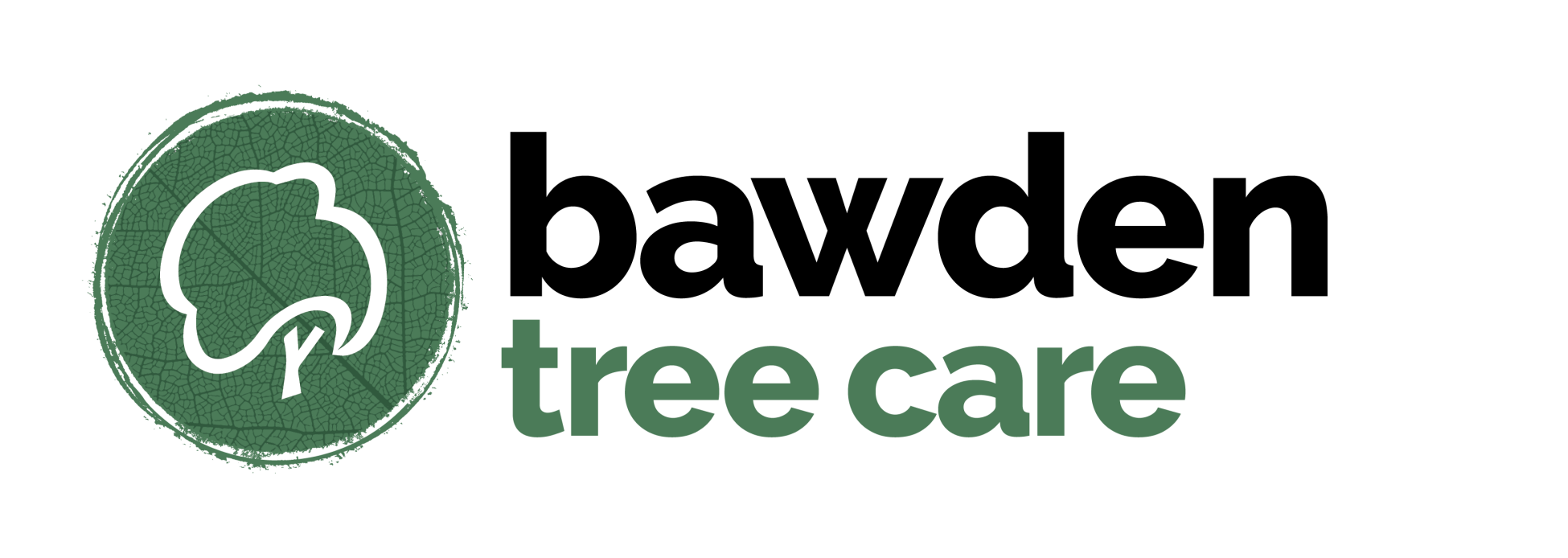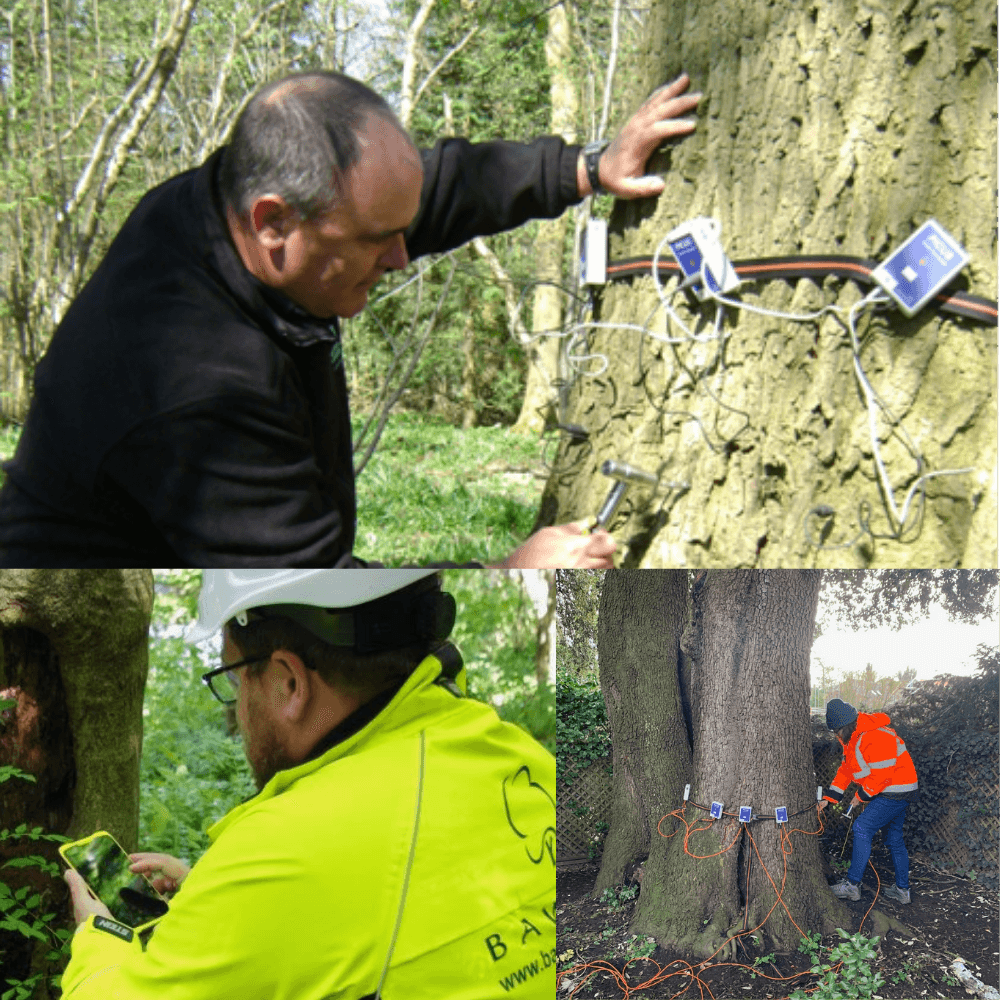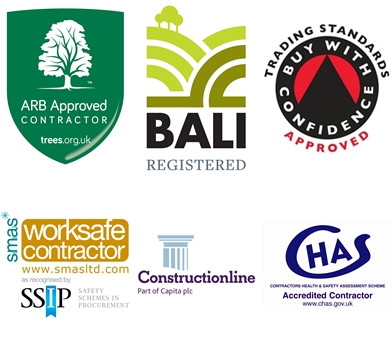Many of the customers that approach Bawden Tree Care for Arboricultural Reports, Tree Surveys or Tree Inspections have no experience in terms of having previously seen such documents or having commissioned surveys or inspections before. As a result our Team are often asked who or what is an Arboricultural Surveyor, are they different from a Tree Surveyor, or do they both complete tree surveys and write arboricultural reports?
This short article has been written to provide some answers to these questions as well as providing what is hopefully some useful background information - it is not meant to be a comprehensive piece on the surveying and report writing aspect of the arboricultural industry.
What is a Arboricultural Survey or Tree Report - are they one in the same?
Tree surveying is the activity of surveying a tree or group of trees, nearly always for a specific reason - it is the reason for the tree survey that determines then type of survey and method by which it is completed. In it's simplest form it could be an individual, with no professional training, walking around their own property looking for damaged limbs on their own trees or perhaps signs of disease - most householders with trees in their gardens will have done this at some stage. When completed on a professional basis there will be a defined objective for having the survey completed - this will determine the nature of the survey and potentially by whom it is completed. Professional tree surveys will always result in some firm evidence that one has been completed - detailing data collected and conclusions drawn, this will commonly take the form of a written tree report often supplemented with digital mapping. Reports can include digital scans providing an insight on the extent of decay and internal condition of tree sections, sometimes reports purely focus on one or a small number trees where such intensive surveying and inspection has been carried out.
Reasons for having a tree survey completed will include, but not be limited to:
- Health and safety concerns - including meeting landowners responsibilities.
- Property development and construction.
- Tree identification.
- As part of a wider land and estate management plan.
- Tree and woodland mapping and management.
- Mortgage application - property purchase.
- Ecology and habitat management.
- Concerns regarding root damage to infrastructure.
- Decay and/or disease has become evident.
- Tree protection - Tree Preservation Orders
This list is not exhaustive, there will be other situations where a tree survey or arboricultural report is commissioned to provide insight and aid management going forward.
Going back to the question - the answer is that potentially they are one in the same - reports and surveys - written or digital - all part of one process.
Do I need an Arboricultural Surveyor, Tree Surveyor, Tree Inspector or Arboricultural Consultant to write my report ?
To produce a professional and meaningful report on any subject requires expertise and experience in the subject matter - arboriculture is no different in this respect. Anyone commissioning a professional report is almost certainly doing so to obtain data and conclusive evidence which they can rely on in some decision making process. It is therefore important that the person or persons completing the survey has a degree of expertise in arboriculture - a tree expert.
Potentially the degree of expertise required will vary according to the type of survey commissioned, complexity of the data required and resulting analysis to obtain robust conclusions. But how is the appropriate level of expertise determined - there are many 'experts' out there in a variety of fields - the Collins Dictionary defines the meaning of 'expertise' as a skill or knowledge that is acquired through; training, study or practice - in terms of practice this will include relevant work experience.
It is therefore important to complete an appropriate amount of due diligence before selecting an individual or individuals to complete any tree inspection, surveying and/or report writing to ensure that they are qualified appropriately and have a reasonable amount of work experience in the field. For example the Arboricultural Association requires Arboricultural Consultants seeking accreditation under their scheme to have at least 5 years relevant work experience as well as qualifications at very industry specific levels. The level and type of qualifications will be varied - as has already been mentioned arboricultural surveying and report writing covers a range of disciplines - understandably these will not be covered by one qualification.
So returning to the question, the answer is, that given the wide range of survey and reports on offer and the differing levels of data that can be collected and technical knowledge required to do so, there is a need to drill down and determine the level of qualifications and experience the report writer has - is it suitable and adequate for the report required. In summary what ever the report objective there can be no doubt that a professional is required and therefore either an Arboricultural Consultant, Tree Surveyor, Tree Inspector or Arboricultural Surveyor to do this should be chosen.
Should my report and survey be a digital document or paper based one?
One would imagine that the days of hand written tree survey reports are well behind us and, at the very least, reports are now produced using some form of word processing - so essentially digital - after all we have started our journey through what has become known as the fourth industrial revolution or ' Industry 4.0 ' and this is impacting the way most business disciplines operate, including arboriculture.
Focusing on the report itself there is no doubt that a digital version has a number of advantages over a printed paper one, these include, but are not limited to:
- Easily shared with interested parties, such as tree surgeons and contractors, management teams, professional advisors, tree officers, mortgage lenders, planning consultants and architects.
- Relatively simple to produce different versions of the same document according to the end users needs.
- Simple to include links to points of reference, external documents, and other digital data via the internet and hyperlinks.
- Easily stored and readily accessed particularly if using cloud computing.
- Few limits in terms of size and scale of the document, adding searchable tags and indexing making it easy for end users to find specific items of data.
- Very easy to incorporate charts, data tables, photographs and even video if deemed useful.
Moving to the survey and data collection process itself, again technology would appear to be the clear winner, of course a truly digital report can't be provided if the process of data collection has been completed using pencil, paper and clipboard. There is a variety of digital equipment and software available to produce great quality digital mapping and tree surveys from leading supplier such as Pear Technology. Key benefits of completing the data collection process using digital methods include:
- Precise GPS location of trees being surveyed can be obtained.
- Ordnance Survey mapping available, great accuracy and regularly updated.
- Flexibility to overlay maps on architects drawings and planning documents very useful especially in BS5837 surveys.
- Digital tools very portable in the field.
- Photographs and other date easily attached to digital references in survey reports.
The conclusion is that digital surveys and reports; offer greater flexibility, are easily stored and updated, are portable and dynamic - all adding up to digital being the clear choice over 'paper'.


